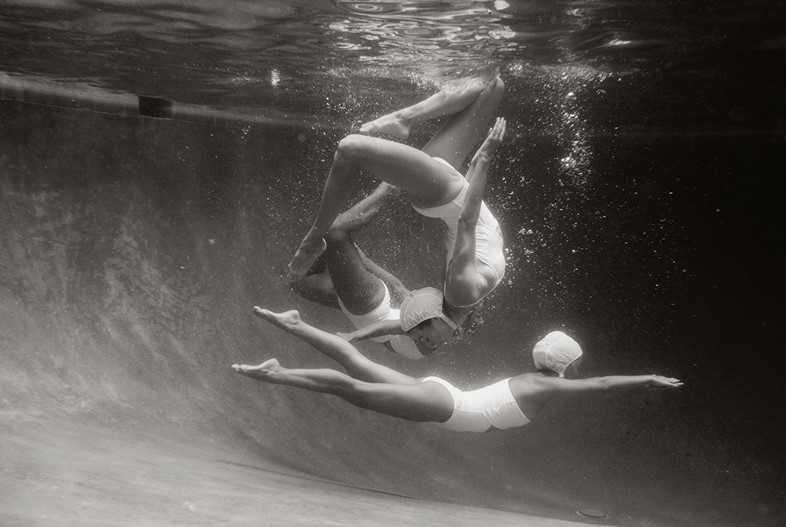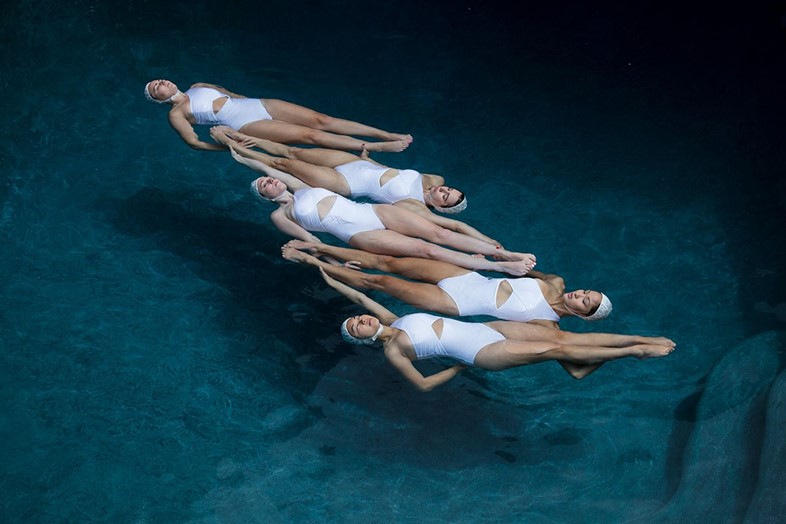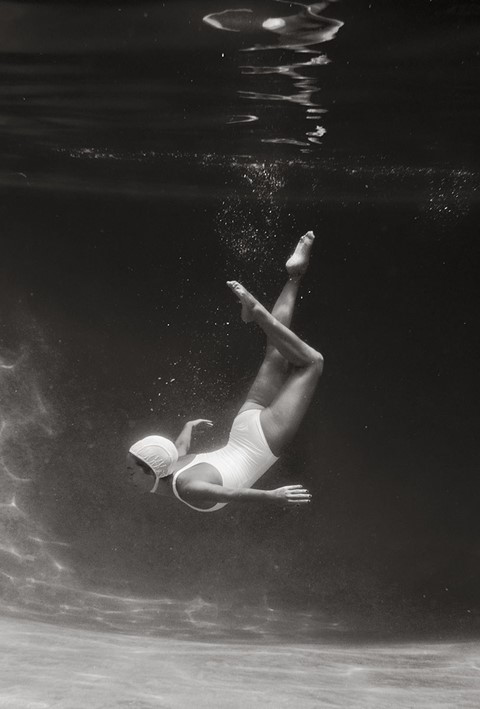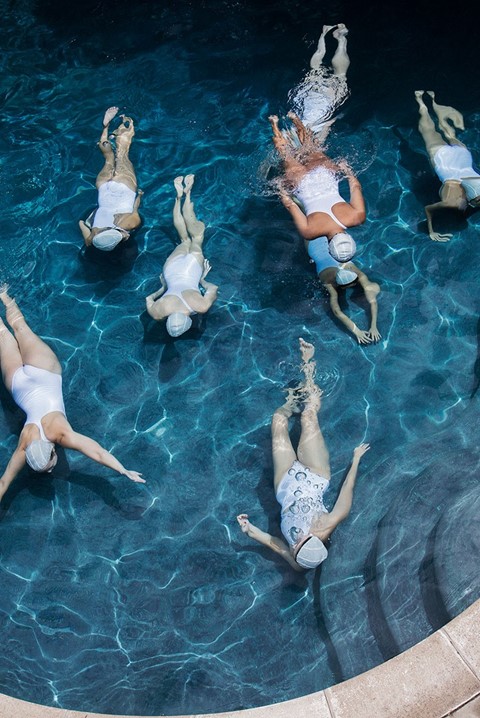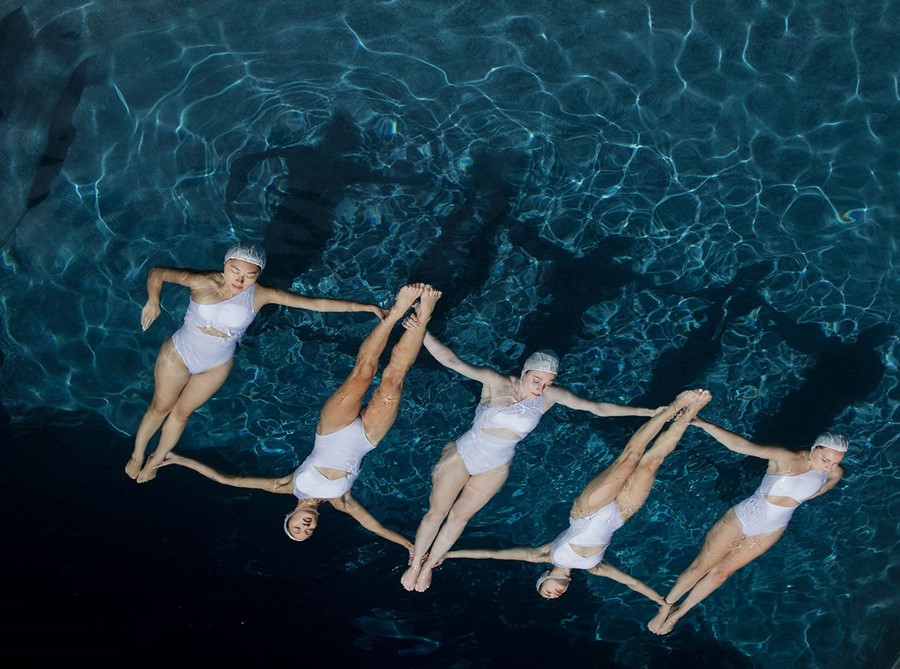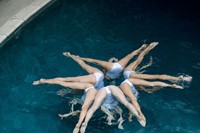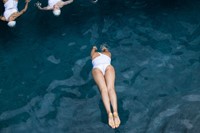Emma Hartvig spent an afternoon capturing the balletic routines of Los Angeles-based team the Aqualillies
Looking at Emma Hartvig’s series The Swimmers, with its crystalline blue water and acrobatic women in pristine white costumes, feels like stepping back in time. Or rather, diving into another era. This is not surprising. “I have this thing for Esther Williams and the old school Los Angeles pool culture,” the photographer admits. Hartvig’s images have as their subject the Aqualillies, a Los Angeles-based group of synchronised swimmers who approached her upon learning she was in town. “They have apparently been following my work for quite some time, and asked if I would photograph them,” Hartvig explains, “which was, to put it simply, a dream come true.” So over the course of a few hours in “a fantastic house in the Hollywood Hills”, Hartvig captured the Aqualillies as they dived, floated, posed and performed in perfect synch.
“I’m very interested, generally in all my work, in tension and awkwardness in juxtaposition with beauty,” says Hartvig. “Like the whole Hollywood cinematic tale of ‘after the curtain falls’.” Her shots are innately voyeuristic, but somehow in an intimate way – Hartvig gets to the crux of the action in a way that never reads as intrusive. “I tried to take as many pictures of them just concentrating, swimming and being the beautiful athletic swimmers they are,” she says, “and tried to reveal that seriousness and strength within the entertainment of the synchronised swimming.” Hartvig taps into what she calls the ‘behind the scenes’ of what the Aqualillies do, capturing them without any element of performativity, and this lack of veneer is what renders The Swimmers so striking.
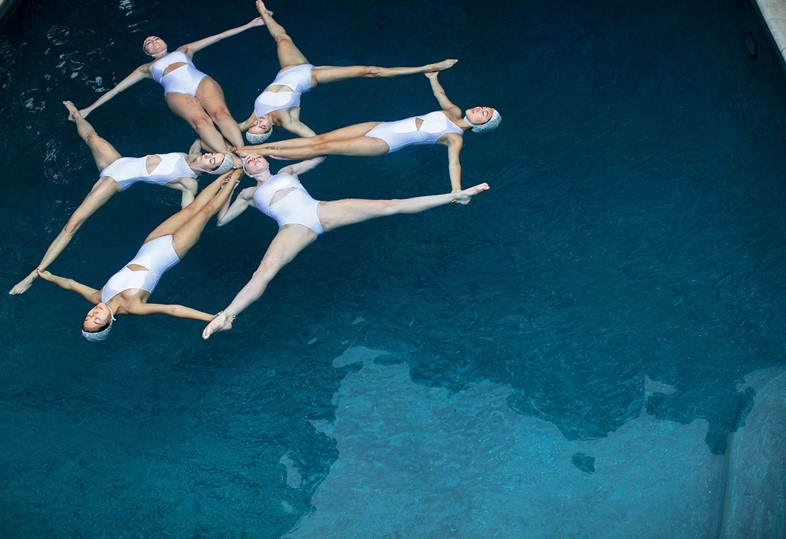
The underwater photographs, which see the Aqualillies’ precise and graphic poses play out across the entire shot, are especially captivating. Hartvig divulges that “it was quite challenging to try to stay still underwater and focus and do it properly. Luckily, I’m a girl born by the sea so I’m very good at holding my breath underwater, and it went smoothly.” With some shots taken from an unexpected angle – the swimmers might dive down into a bottom corner of the frame, or float in formation at the frame’s very edge as another watches on – there is an intriguing sense of tension and movement. It was “how serious, hard-working and strong these swimmers are,” that Hartvig hopes to communicate – and she certainly does, to wondrous effect.
